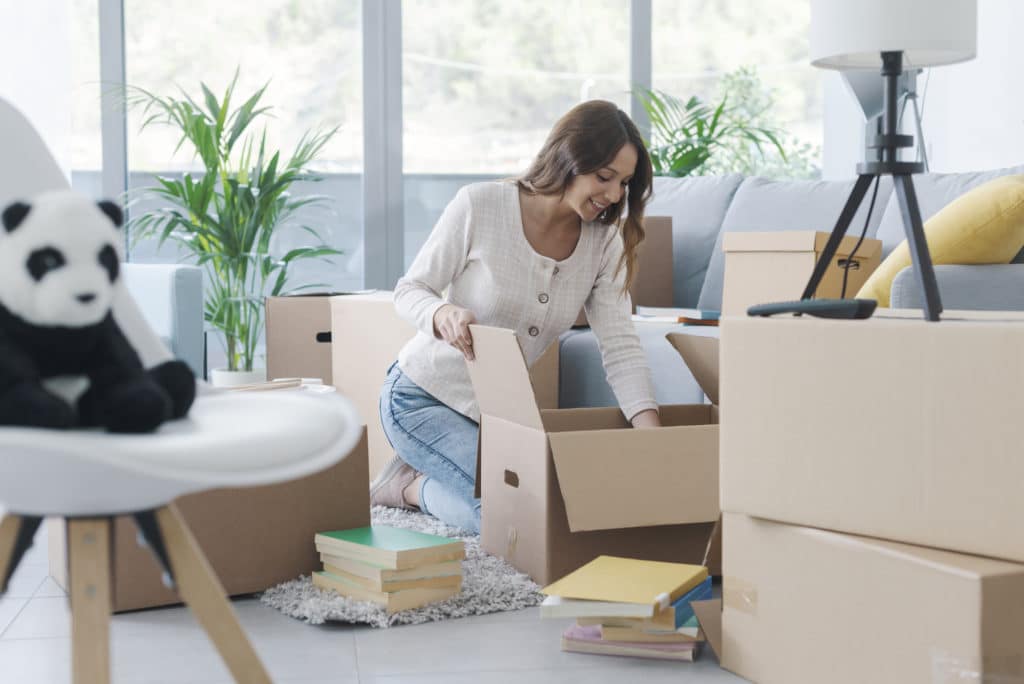The Psychology Behind Tidying Up and How to Maintain Order

Everyone’s seen the horrific scenes on the show Hoarders where wide-eyed residents plead with cleaning crews, insisting that the greasy plastic fork that’s been under the couch for five years is truly essential to their existence or that the stack of newspapers from 1979 really is worth keeping. As it turns out, the public is quite fascinated by this Obsessive Compulsive Disorder known as hoarding. A lot of people often struggle to get rid of old items, shaggy clothes, or those old trinkets that seem too cute to throw away. So how do you keep your El Paso apartment from turning into one of these nightmarish scenarios?
Let’s take a look at what hoarding disorder really is and some of today’s most popular methods to keep things, well, tidy.
First things first, chances are, you’re not a hoarder—although you might be surprised to find out that 1 out of every 50 Americans (according to Psychology Today) suffer from some degree of hoarding disorder. That is, 2% to 6% of the U.S. population. So, to be a true hoarder things have to be really wild in your apartment, we mean really wild. That means stacks of rotting newspapers, towers or dirty dishes, and collections of weird trinkets, collectibles, seashells, pine cones, t-shirts, cats—you name it.
What is Hoarding Disorder?
Hoarding is a type of obsessive-compulsive disorder. People that suffer from this disorder collect items and are unable to get rid of or discard anything from their homes. The consequences pile up rather quickly. The characteristics of hoarding disorder are as follows:
- Inability to throw things away
- Suffering from stress when faced with the prospects of throwing things away
- Uncertainty or indecisiveness when it comes to putting things away
- Making living spaces unlivable
- Pushing away friends and family that try to help
As a psychological disorder, hoarding is accompanied by high levels of depression and anxiety. Treatments involve serious medical intervention that usually comes in the form of cognitive-behavioral therapy and sometimes antidepressants.
The Catch-22 of Hoarding
Hoarders often find themselves in a vicious cycle. Collecting things alleviates the anxiety that they get from confronting the world, but the more they collect things, the thicker the layer between them and society grows. This means they wedge a thicker barrier between them and the world. The more stuff they collect, the more they insulate and isolate themselves, and unless they break the cycle many get caught in it.
According to research, for a hoarder, throwing away objects can activate the same part of the brain that’s also responsible for processing pain.
So most people that may not be serious hoarders may still have some cluttering problems. These are your casual pack rats, extreme collectors, serious savers, accumulators of unnecessary things, clutter squirrels, etc.
It’s more common to fall under one of the above categories than a truly diagnosed hoarder. So, if you look around your El Paso apartment and think that you can use some decluttering, here is where to begin.
The Decluttering Motto of Tidying Up
In deep contrast—and perhaps as an antidote to hoarding—the decluttering evangelist Marie Kondo rose to fame a few years ago with her book about how to tidy up your home. She offered several practical pieces of advice that guided people towards a more ordered and prosperous home or apartment.
The basic premise of Kondo’s philosophy (now also a television show) is to find the things that bring us joy and shed those that do not. It’s all done in an attempt to minimize stress, improve order and induce calm and productivity.
4 Tips for Tidying up Your Home
You don’t have to throw everything away. After all, some people get joy from certain items and other items hold genuine sentimental value. The trick is sorting through your stuff and finding that which is truly valuable to you and that which is not.
Here are a few tips to follow, inspired by KonMari’s six rules.
#1 Commit yourself to tidying up. This is Kon Mari’s first rule and it’s a solid start. First, you have to admit there’s a problem that needs to be solved or addressed.
#2 Imagine your ideal space. You don’t have to be tidy to a Kon Mari degree (her second rule is also ‘imagine your ideal lifestyle’). It’s possible you like to collect a few things or don’t mind some mementos here and there. The point is, you decide the kind of space you want to create and you go for that. Take control of your space, don’t let it take control of you.
#3 Clean by categories. Cleaning room to room can work, but a more long-term solution is tidying up by categories. This way, you create guiding principles and categories that make it easier to keep things tidy.
#4 Ask yourself if it sparks joy. This is declutter guru Kon Mari’s 6th rule and probably her most famous. She suggests that as you go through your pile of belongings that you ask yourself whether the item or garment brings you joy. If it no longer ‘sparks’ joy then it might be time to part ways. That doesn’t mean you just toss it, it means you say a few words, thank it for its service, and then neatly put it in the Goodwill box or trash.
Make the Most Out of Your El Paso Apartment and Live in Style
There is no right or wrong way. Here at Caprock Apartments, we have a diverse group of folks living in the community. These luxury apartments offer you the opportunity to decorate and tidy up in the way that you choose. After all, this is your space. We want you to feel right at home and you get to define what that looks like here at Caprock.
Ready to take the next step? Choose a unique community in the beautiful town of El Paso, Texas. We have the right apartment for you. Call us for vacancies today and find the joy in living!







